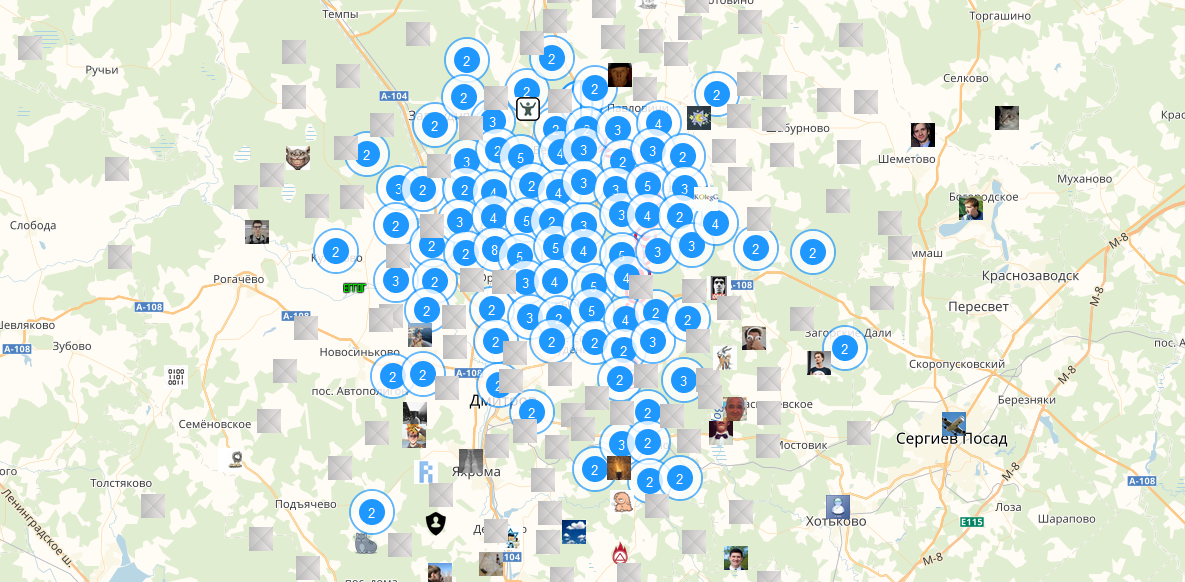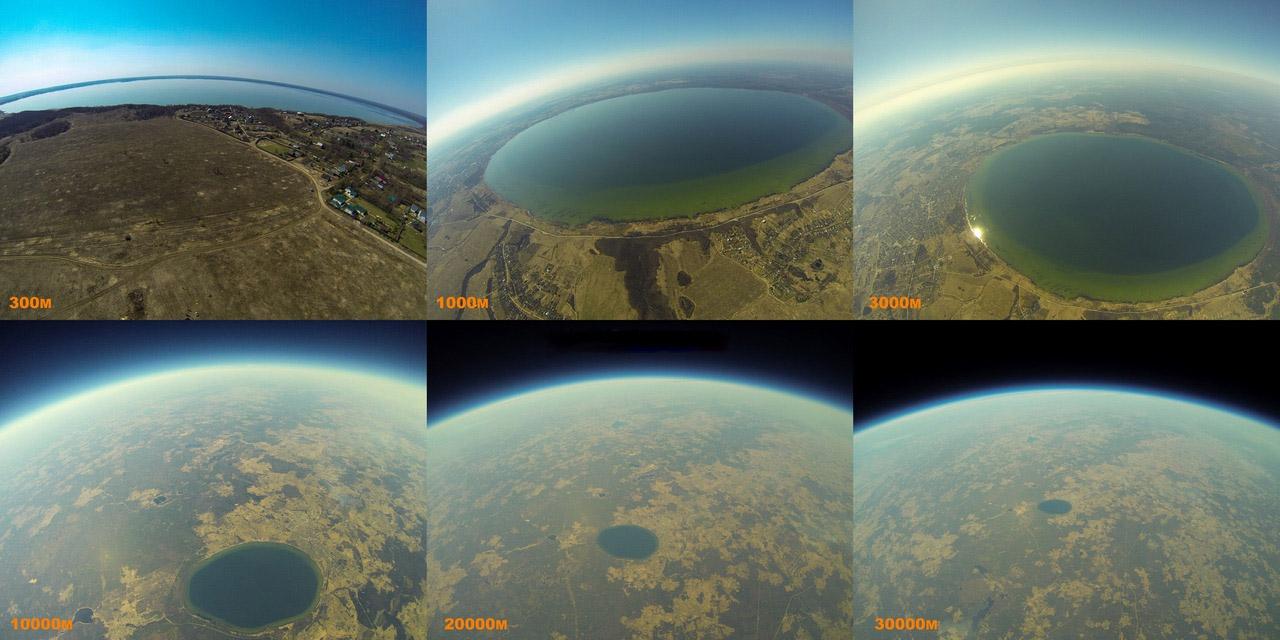Server in the clouds 2.0. We start the server in the stratosphere
Friends, we invented a new movement. Many of you remember our last year's server-in-the-clouds server geek project: we made a small server based on the Raspberry Pi and launched it on a balloon.

Now we have decided to go even further, that is, above - we are waiting for the stratosphere!
Briefly recall what was the essence of the first project "Server in the clouds." The server did not just fly in a balloon, the intrigue was that the device was active and transmitted its telemetry to the ground.
')

That is, everyone could follow the route in real time. Before launching 480 people put labels on the map where a balloon could land.

Of course, in full accordance with the law of Edward Murphy, already in flight, the main communication channel for a GSM modem “fell off”. Therefore, the crew had to literally switch to a backup link based on LoRa on the fly . Also, the aeronauters had to solve the problem with a USB cable connecting the telemetry module and the Raspberry 3 - it seems he was afraid of the height and refused to work. Well, that this problem ended and the ball landed safely. Three lucky ones, whose tags were closest to the landing site, received tasty prizes. By the way, for the first place we presented participation in the sailing regatta AFR 2018 (Vitalik, hello!).
The project proved that the idea of "air-based servers" is not as crazy as it may seem. And we want to take the next step on the way to the “flying data center”: check the operation of the server that rises to a height of about 30 km on the stratosphere - into the stratosphere. The launch is timed to the Day of Cosmonautics, that is, there is nothing left, less than a month.
The name “Server in the Clouds 2.0” is not entirely correct, because at such a height you will not see a cloud. So you can call the project “Sky-high server” (the next project will have to call “Baby, you are space!”).

Photo taken here
As in the first project, the server will be valid. But the highlight is something else: we want to test the concept of the famous Google Loon project and test the very possibility of distributing the Internet from the stratosphere.
The server operation scheme will look as follows: on the landing page, you can send text messages to the server through the form. They will be transmitted via an HTTP protocol via 2 independent satellite communications systems to a computer suspended under the stratosphere, and the computer will transmit this data back to Earth, not by the same route via satellite, but via radio. Thus, we will know that the server generally receives data, and that it can distribute the Internet from the stratosphere. We can also calculate the percentage of information lost “on the track”. On the same landing page, the stratospheric flight graph will be displayed, and it will mark the receiving points of each of your messages. That is, you can track the route and the height of the "transcendental server" in real time.
And for completely unbelievers who say that this is all tweaked, we will install a small screen on board, on which all the messages received from you will be displayed on the HTML page. The screen will be shot by a camera, in the field of view of which there will be a part of the horizon. We want to broadcast the video signal over the radio channel, but there is a nuance: if the weather is good, the video should reach the ground for most of the flight of the stratostat, at 70-100 km. Under cloud cover, the transmission distance may fall to 20 kilometers. But in any case, the video will be recorded and we will publish it after we find the fallen stratostat. By the way, we will look for it by the signal of the onboard GPS beacon. According to statistics, the server will land within 150 km from the launch site.
Soon we will describe in detail how the equipment of the stratostat payload will be arranged, and how all this should work with each other. And at the same time we will open some more interesting details of the project related to space.
So that it was interesting for you to follow the project, as in the past year, we have come up with a competition in which you need to determine where the server landed. The winner, who guessed the most accurate landing place, will be able to go to Baikonur, to launch the Soyuz MS-13 manned vehicle on July 6, the prize for second place is a travel certificate from our friends from Tutu.ru. Twenty other participants will be able to go on a group trip to Star City in May. Details on the contest website .
Follow the news on the blog :)

Now we have decided to go even further, that is, above - we are waiting for the stratosphere!
Briefly recall what was the essence of the first project "Server in the clouds." The server did not just fly in a balloon, the intrigue was that the device was active and transmitted its telemetry to the ground.
')

That is, everyone could follow the route in real time. Before launching 480 people put labels on the map where a balloon could land.

Of course, in full accordance with the law of Edward Murphy, already in flight, the main communication channel for a GSM modem “fell off”. Therefore, the crew had to literally switch to a backup link based on LoRa on the fly . Also, the aeronauters had to solve the problem with a USB cable connecting the telemetry module and the Raspberry 3 - it seems he was afraid of the height and refused to work. Well, that this problem ended and the ball landed safely. Three lucky ones, whose tags were closest to the landing site, received tasty prizes. By the way, for the first place we presented participation in the sailing regatta AFR 2018 (Vitalik, hello!).
The project proved that the idea of "air-based servers" is not as crazy as it may seem. And we want to take the next step on the way to the “flying data center”: check the operation of the server that rises to a height of about 30 km on the stratosphere - into the stratosphere. The launch is timed to the Day of Cosmonautics, that is, there is nothing left, less than a month.
The name “Server in the Clouds 2.0” is not entirely correct, because at such a height you will not see a cloud. So you can call the project “Sky-high server” (the next project will have to call “Baby, you are space!”).

Photo taken here
As in the first project, the server will be valid. But the highlight is something else: we want to test the concept of the famous Google Loon project and test the very possibility of distributing the Internet from the stratosphere.
The server operation scheme will look as follows: on the landing page, you can send text messages to the server through the form. They will be transmitted via an HTTP protocol via 2 independent satellite communications systems to a computer suspended under the stratosphere, and the computer will transmit this data back to Earth, not by the same route via satellite, but via radio. Thus, we will know that the server generally receives data, and that it can distribute the Internet from the stratosphere. We can also calculate the percentage of information lost “on the track”. On the same landing page, the stratospheric flight graph will be displayed, and it will mark the receiving points of each of your messages. That is, you can track the route and the height of the "transcendental server" in real time.
And for completely unbelievers who say that this is all tweaked, we will install a small screen on board, on which all the messages received from you will be displayed on the HTML page. The screen will be shot by a camera, in the field of view of which there will be a part of the horizon. We want to broadcast the video signal over the radio channel, but there is a nuance: if the weather is good, the video should reach the ground for most of the flight of the stratostat, at 70-100 km. Under cloud cover, the transmission distance may fall to 20 kilometers. But in any case, the video will be recorded and we will publish it after we find the fallen stratostat. By the way, we will look for it by the signal of the onboard GPS beacon. According to statistics, the server will land within 150 km from the launch site.
Soon we will describe in detail how the equipment of the stratostat payload will be arranged, and how all this should work with each other. And at the same time we will open some more interesting details of the project related to space.
So that it was interesting for you to follow the project, as in the past year, we have come up with a competition in which you need to determine where the server landed. The winner, who guessed the most accurate landing place, will be able to go to Baikonur, to launch the Soyuz MS-13 manned vehicle on July 6, the prize for second place is a travel certificate from our friends from Tutu.ru. Twenty other participants will be able to go on a group trip to Star City in May. Details on the contest website .
Follow the news on the blog :)
Source: https://habr.com/ru/post/445648/
All Articles